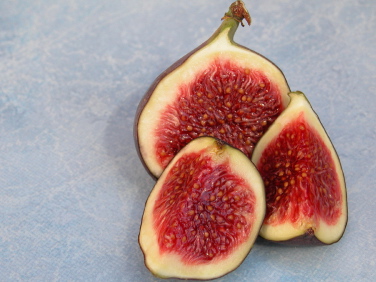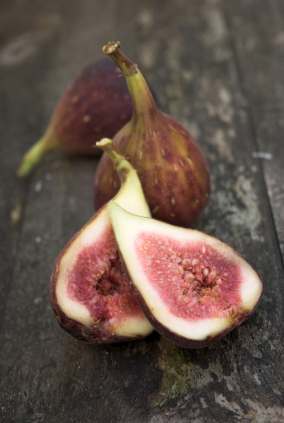
reference-image, l
(article, Jessica MacMurray Blaine)
[%adInjectionSettings noInject=true] Publishers are savvy folks. They name books and design covers to titillate and intrigue us, to strike chords and funny bones when we, gentle readers, are simply browsing the shelves. In a previous life I was a foot soldier in the publishing world, brainstorming titles and comparing cover sketches, trying to get to the chords and bones (and wallets) of the American book shopper. That part of me returned and laughed out loud when I came across The Sex Life of Food, by the amazingly named Bunny Crumpacker. They’ve really gone for it, I thought, looking at the jacket cover: a blasé Eve flashing a nipple, an apple in her hand, with a serpent slithering in from top left. I bit, and bought, and sat down with the book, skeptical. What would this book be? As titillating as its title promised, full of delicious, sexy treasures from food history and literature for the research-obsessed? Or just a good title with some interesting kernels cast on well-trodden ground? (Eve, apples, oysters, carrots — okay, Freud, we get it.) As it turned out — as it almost always does when know-it-all book reviewers jump to conclusions about what a book might or might not be — The Sex Life of Food is neither of those things. It’s something better: an orgy of curiosities followed and minutiae explored. Which makes it less like sex than love. Eating is not just about fuel for our bodies, but an emotional, tangible, peculiar process worth examining. Crumpacker begins with birth. In her understated, conversational tone, she eases readers into a fundamental human moment. “The first meal is a simple one,” she writes. “Eve’s was just a bite of apple; a baby’s is just a bit of milk . . . food is our first comfort, our first reward. Hunger is our first frustration.” As a concept, it couldn’t be more basic — and that’s what makes it (and the way that Crumpacker presents it so simply) so lovely to read. [%image figs width=250 float=left credit="Photo: iStockphoto/dkgilbey" caption="How do I love figs? Let me count the ways."] She goes on, through this first chapter, to meander from suckling babes to a lengthy, fascinating discussion of research about color and food, class, taste, and anthropomorphism, touching on soldiers in World War II, cockroaches in Burma, camel’s milk in Kazakhstan, and squirrel brains in Kentucky. It’s a ramble, but an interesting one. As the chapters unfold, Crumpacker selects various strands of offbeat academic research and weaves them into a narrative that is fundamentally driven by the author’s curiosity. Pause for a few pages to consider the gender of various foods. Phallic vegetables are masculine, luscious fruits are feminine. Meat is masculine, dessert is feminine. Lamb is bisexual. And figs, with their conflicting images — masculine seeds, feminine softness and sweetness — are just full of sex. Pause again later, to consider the characteristics and symbolism of teeth. (Even dentists get a role to play here.) Still later, it’s time for the Donner Party, Uruguayan rugby players in the Andes, and the impulse of some murderers to bite and ingest their victims. Crumpacker, as she does throughout, follows a trail and doesn’t stop until she’s sniffed out every inch, at a pace that’s slow enough to indulge digression and pack the pages of this slim book with satisfying food ephemera. All sex life aside, the book’s subtitle is the most accurate description of its contents: When Body and Soul Meet to Eat. Crumpacker’s book is not a racy romp, nor a thesis-driven treatise on a philosophy, but a collection of beautifully wrought rambles about our relationship with food and eating — a subject that is both basic and wildly complex. p(bio). [jessmacmurray@aol.com "Jessica MacMurray Blaine"] is a writer based in Crow, Oregon. Her work has appeared in Gastronomica, Northwest Palate, Oregon Quarterly, and Forest Magazine. She is also part of the management team at Marché, a group of seasonally focused restaurants in Eugene, Oregon.

reference-image, l

feature-image, l

promo-image, l

featurette-image, l

figs, l